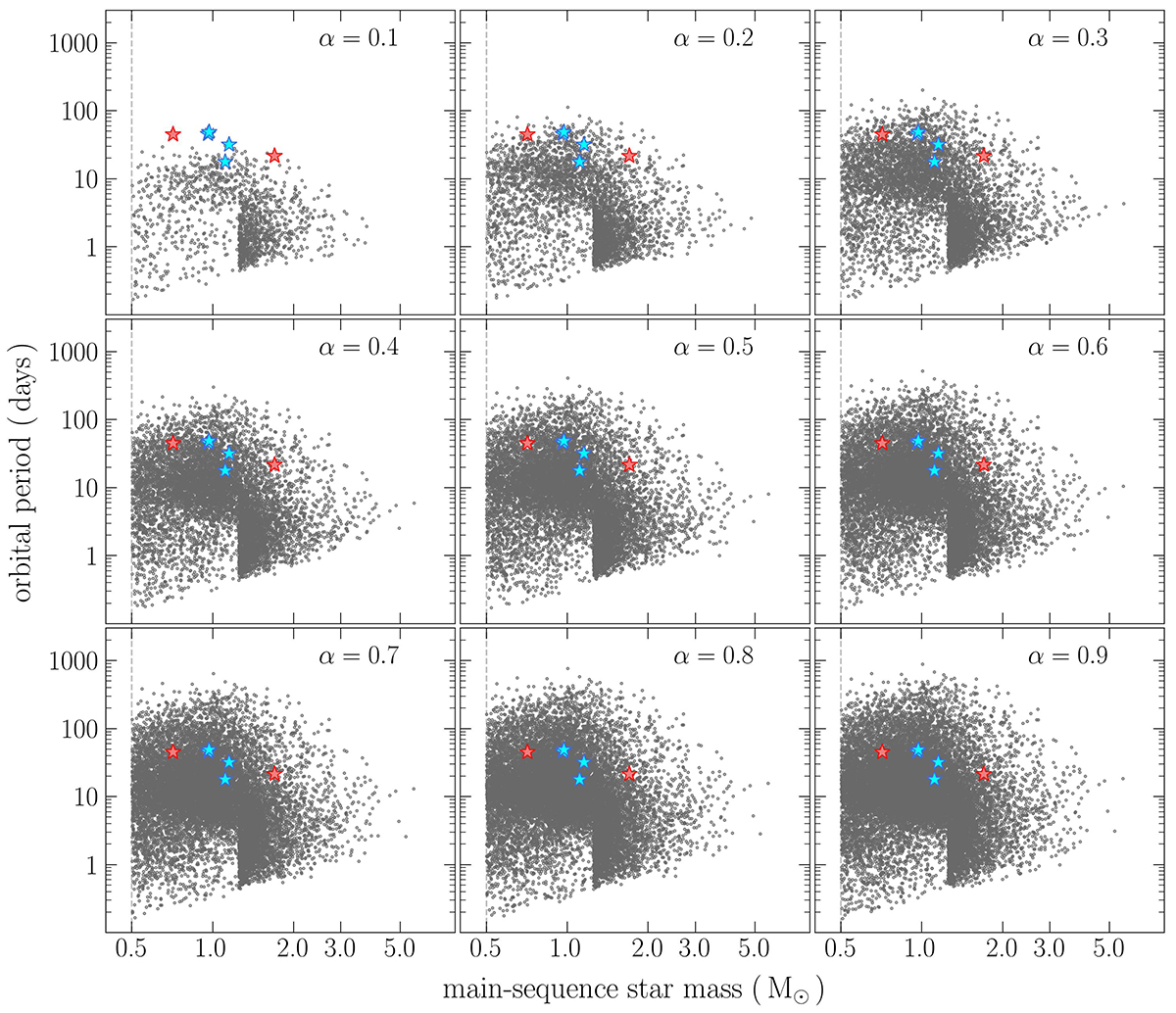Fig. 2.

Download original image
Similar to Fig. 1, but in the plane main-sequence companion mass vs orbital period. The detached post-CE binaries are mainly found in two clumps in this plane. The first clump corresponds to main-sequence star masses ≳1.25 M⊙, which happens because magnetic braking is not expected to be acting in these stars, which means their orbital periods cannot easily change as the only source of orbital angular momentum loss is the emission of gravitational waves. Only those binaries with sufficiently short orbital periods have their orbital periods substantially changed. The second clump corresponds to post-CE binaries with sufficiently long orbital periods (≳5 d). Irrespective of whether magnetic braking is acting or not in these binaries, their long orbital periods make any source of orbital angular momentum loss weak. For the remaining post-CE binaries (i.e. with main-sequence star masses ≲1.25 M⊙ and orbital periods ≲5 d), magnetic braking combined with emission of gravitational waves more easily turn them into cataclysmic variables, that is, semi-detached binaries, and for this reason this region is less populated. Most importantly, all six known long-period post-CE binaries with massive WDs can be explained for any value of the CE efficiency α ≳ 0.2.
Current usage metrics show cumulative count of Article Views (full-text article views including HTML views, PDF and ePub downloads, according to the available data) and Abstracts Views on Vision4Press platform.
Data correspond to usage on the plateform after 2015. The current usage metrics is available 48-96 hours after online publication and is updated daily on week days.
Initial download of the metrics may take a while.


